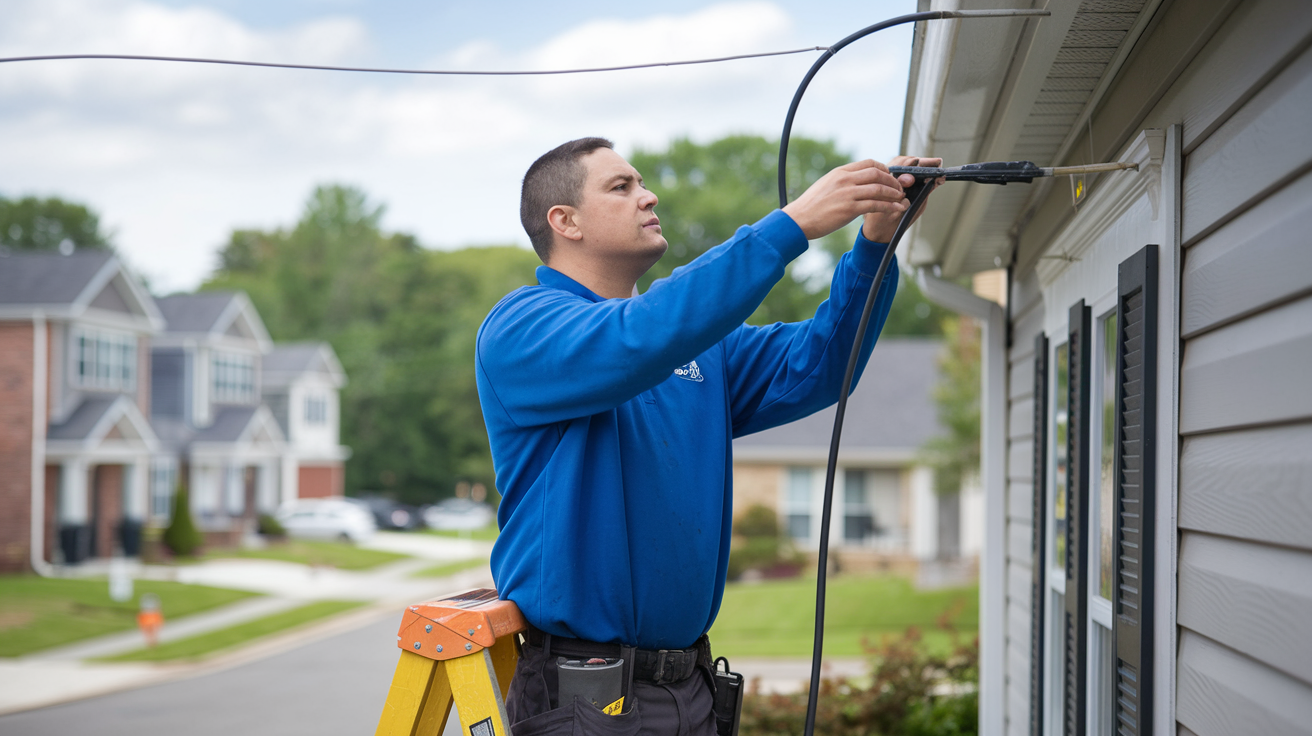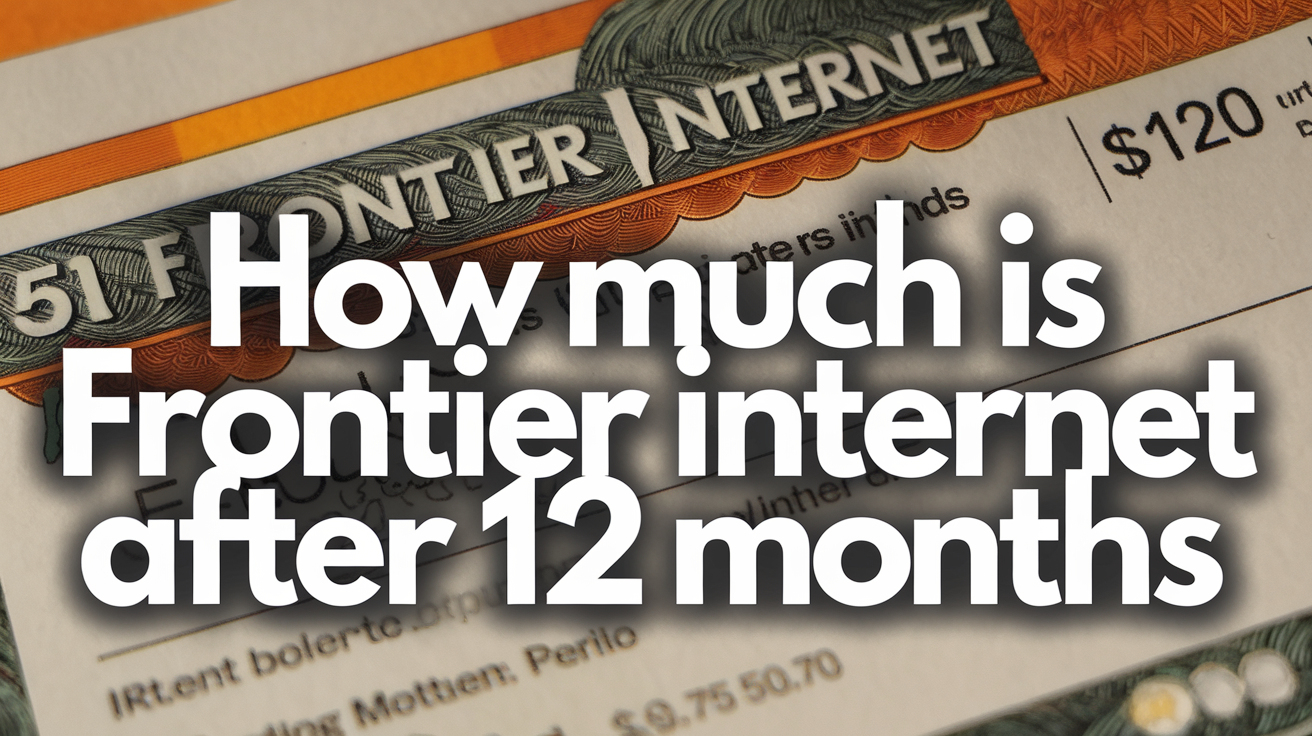Frontier Internet Plans: What Existing Customers Need to Know

As an existing Frontier Communications customer, you’ve likely experienced the ups and downs of their internet service, whether it’s the blazing-fast fiber speeds in some areas or the slower DSL connections in others. With the company continuously evolving its offerings and expanding its fiber network, there’s a lot to keep up with in 2025. This dives into everything you need to know about Frontier Internet plans as an existing customer, including plan options, pricing updates, perks, potential fees, and tips to optimize your service. Let’s break it all down so you can make the most of your Frontier experience.
Understanding Frontier’s Current Internet Plans
Frontier offers two primary types of internet service: fiber-optic (branded as Frontier Fiber) and DSL (often referred to as Frontier Internet). Your available plans depend heavily on your location, as Frontier’s fiber network is still expanding, while DSL remains the fallback in more rural areas. Here’s a snapshot of what’s available as of April 2025:
- Frontier Fiber Plans: These are the crown jewel of Frontier’s offerings, delivering symmetrical upload and download speeds that rival the best in the industry. Plans range from 200 Mbps to an impressive 7 Gbps (Fiber 7 Gig), catering to everyone from casual browsers to power users. Pricing starts at $29.99 per month for Fiber 200 (with Auto Pay and paperless billing) and scales up to $299.99 for Fiber 7 Gig. All fiber plans include unlimited data and a free router—either an Amazon eero Pro 6E for lower tiers or a TP-Link Archer AXE300 for the top-tier plans.
- Frontier DSL Plans: For areas without fiber access, DSL is still an option, though speeds are significantly slower and less predictable, typically ranging from 9 Mbps to 25 Mbps. Pricing starts around $44.99 per month, but Frontier doesn’t heavily advertise specific DSL speeds, so you’ll need to check availability for your address. Like fiber, DSL plans come with unlimited data, which is a plus for rural customers with limited options.
As an existing customer, you might be locked into an older plan or promotional rate. Frontier’s fiber expansion—aiming to reach 10 million locations by the end of 2025—means you could be eligible for an upgrade if fiber becomes available in your area. It’s worth checking periodically to see if faster speeds are now an option.
Pricing Updates and What to Expect
One of Frontier’s strengths is its transparent pricing model, especially for fiber customers. Unlike some competitors, Frontier doesn’t impose data caps or surprise price hikes after a promotional period ends. For example, Fiber 500 at $44.99 per month or Fiber 1 Gig at $69.99 per month come with multi-year price guarantees, ensuring your bill stays predictable. However, DSL customers might not see the same consistency, as pricing and speeds can vary widely by location.
If you signed up during a promotional period, your rate might have increased after the first year, typically by $10 to $20, depending on the plan. Frontier’s introductory pricing strategy is common in the industry, but existing customers can sometimes negotiate to retain a lower rate (more on that later). Additionally, a $3.49 monthly fee for printed bills was introduced due to rising costs, but you can avoid it by switching to paperless billing through your Frontier account.
Perks and Add-Ons for Existing Customers
Frontier sweetens the deal for existing customers with a few perks, though they’re not as flashy as the gift cards or free months offered to new subscribers. Here’s what you can take advantage of:
- Free Router Upgrades: If you’re on a fiber plan, your included router (e.g., eero Pro 6E or TP-Link Archer) is a solid perk. Frontier no longer charges rental fees—a change spurred by the 2019 Television Viewer Protection Act—so you’re saving $10 monthly compared to older policies. If your equipment feels outdated, contact Frontier to see if you qualify for a free upgrade.
- Bundling Discounts: Frontier doesn’t offer a standalone TV service, but you can bundle your internet with YouTube TV and save $10 per month for the first year—a $120 annual discount. For home phone users, Frontier’s Unlimited Digital Voice service adds features like voicemail and caller ID, often at a bundled rate lower than standalone pricing.
- Add-On Services: Options like Frontier Total Shield ($10/month) provide multi-device security, VPN privacy, and a password manager. My Premium Tech Pro ($10/month) offers live tech support, while Whole Home Wi-Fi ($10/month) extends coverage to eliminate dead spots. These are optional but could enhance your experience if you’re tech-savvy or live in a larger home.
Watch Out for Fees
While Frontier’s pricing is straightforward, there are a few fees to keep an eye on:
- Early Termination Fee (ETF): If you signed up for a fiber plan with a promotional perk (like a Visa Reward Card), you might be under a 12-month agreement. Canceling early could trigger a $100 ETF, though the Fiber 2 Gig plan is often exempt. Check your contract details to confirm.
- Equipment Restocking Fee: Disconnecting your service incurs a $50 fee per household, plus up to $150 (or $500 for 5 Gig/7 Gig plans) if you don’t return equipment. Avoid this by keeping track of your gear and returning it promptly if you cancel.
- Installation Costs: DSL customers might face a $100 installation fee, though fiber plans currently waive this. Self-installation is an option for some fiber plans, saving you the hassle and cost of a technician visit.
Tips to Optimize Your Frontier Service
As an existing customer, you have some leverage to tweak your plan and keep costs down. Here’s how:
- Check for Fiber Availability: With Frontier’s aggressive fiber rollout, your area might now qualify for an upgrade. Visit frontier.com or call customer service to confirm. Switching to fiber could boost your speeds dramatically for a similar price.
- Negotiate Your Rate: If your promotional rate expired, call Frontier’s retention department (1-833-824-0108) and politely ask for a discount. Mention competitor offers (like Spectrum or AT&T) or your loyalty as a customer. Success isn’t guaranteed, but it’s worth a shot—some users report shaving 10-20% off their bill.
- Audit Your Bill: Review your statement for unexpected charges, like the printed bill fee or unused add-ons. Switching to Auto Pay and paperless billing can save $5-$10 monthly, depending on your payment method.
- Test Your Speeds: If your connection feels sluggish, run a speed test (Frontier offers one on their site). DSL customers might be stuck with slower speeds, but fiber users should contact support if they’re not getting close to advertised rates.
- Consider Low-Income Programs: Frontier participates in the Lifeline program, offering discounts for qualifying low-income households. The Frontier Fundamentals plan also provides basic internet for under $20/month in some areas—check eligibility if you’re on a tight budget.
Frontier in 2025: What’s on the Horizon?
Frontier’s big push to expand its fiber network to 10 million locations by year-end is a game-changer. If you’re still on DSL, this could mean faster speeds are coming your way soon. The company’s acquisition by Verizon (pending finalization) might also shake things up, potentially integrating Frontier’s plans with Verizon’s Fios offerings. For now, though, your current plan remains intact, and locking in a fiber deal could secure you a great rate before any changes hit.
Customer satisfaction is another area to watch. Frontier Fiber scores a respectable 76/100 on the American Customer Satisfaction Index (ACSI) in 2025, tying with industry leaders like Google Fiber. DSL lags behind at 61/100, reflecting its reliability challenges. If you’re on fiber, you’re likely in good shape; DSL users might want to push for an upgrade.
Final Thoughts
For existing Frontier customers, 2025 is a year of opportunity. Whether you’re enjoying fiber’s lightning-fast speeds or making do with DSL, staying informed about your plan options, pricing, and potential upgrades can save you money and boost your internet experience. Regularly check for fiber availability, negotiate when possible, and take advantage of bundling perks to get the most value. Frontier’s not perfect—DSL reliability and customer service still draw complaints—but its fiber service is a standout, especially at these prices. Have questions about your plan? Drop a comment below or reach out to Frontier directly—your perfect internet setup might be just a call away!




